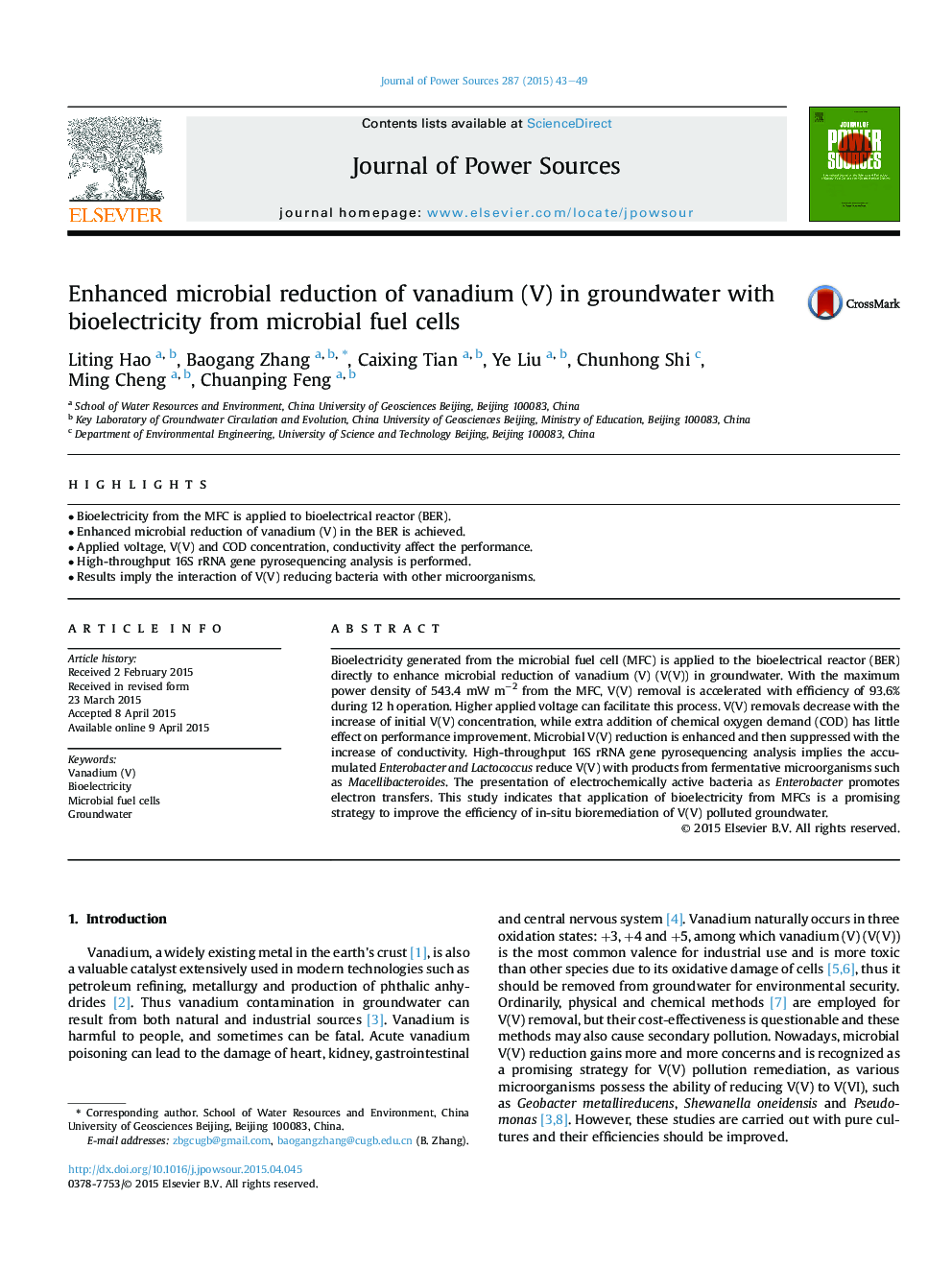| Article ID | Journal | Published Year | Pages | File Type |
|---|---|---|---|---|
| 7731860 | Journal of Power Sources | 2015 | 7 Pages |
Abstract
Bioelectricity generated from the microbial fuel cell (MFC) is applied to the bioelectrical reactor (BER) directly to enhance microbial reduction of vanadium (V) (V(V)) in groundwater. With the maximum power density of 543.4Â mWÂ mâ2 from the MFC, V(V) removal is accelerated with efficiency of 93.6% during 12Â h operation. Higher applied voltage can facilitate this process. V(V) removals decrease with the increase of initial V(V) concentration, while extra addition of chemical oxygen demand (COD) has little effect on performance improvement. Microbial V(V) reduction is enhanced and then suppressed with the increase of conductivity. High-throughput 16S rRNA gene pyrosequencing analysis implies the accumulated Enterobacter and Lactococcus reduce V(V) with products from fermentative microorganisms such as Macellibacteroides. The presentation of electrochemically active bacteria as Enterobacter promotes electron transfers. This study indicates that application of bioelectricity from MFCs is a promising strategy to improve the efficiency of in-situ bioremediation of V(V) polluted groundwater.
Related Topics
Physical Sciences and Engineering
Chemistry
Electrochemistry
Authors
Liting Hao, Baogang Zhang, Caixing Tian, Ye Liu, Chunhong Shi, Ming Cheng, Chuanping Feng,
